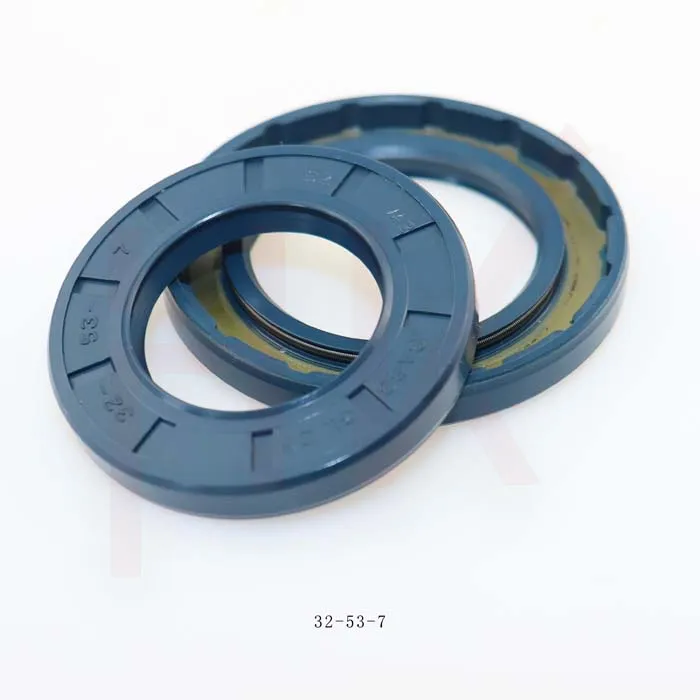Oct . 12, 2024 12:11 Back to list
hydraulic cylinder seals and wipers
Understanding Hydraulic Cylinder Seals and Wipers
Hydraulic cylinders are vital components in a wide array of machinery and equipment, providing the force needed to move, lift, and manipulate loads. As essential as they are, the performance of hydraulic cylinders relies heavily on the effectiveness of seals and wipers. This article explores the importance, functions, and types of hydraulic cylinder seals and wipers, along with some maintenance considerations.
The Role of Hydraulic Cylinder Seals
Hydraulic cylinder seals are designed to prevent fluid leakage while maintaining pressure within the cylinder. They achieve this by creating a tight barrier between the moving parts of the hydraulic system. These seals are crucial for enhancing operational efficiency and performance. Leakage can lead to loss of pressure, reduced power output, and increased wear and tear on components, which can ultimately result in costly repairs or replacements.
There are different types of seals employed in hydraulic cylinders, including static seals, dynamic seals, and rod seals. Static seals are used in areas where there is no movement, typically at the junctions of the hydraulic cylinder components. Dynamic seals, on the other hand, are designed for areas with movement, such as between the piston and the cylinder bore. Rod seals are specifically placed around the piston rod, preventing fluid from escaping when the rod extends or retracts.
Common materials used for hydraulic cylinder seals include nitrile rubber (Buna-N), polyurethane, and fluoroelastomers. The choice of material depends on the operating conditions, such as temperature, pressure, and the type of hydraulic fluid. Selecting the right material is essential for the longevity and reliability of the seals.
Importance of Wipers in Hydraulic Systems
Wipers, also known as scrapers, serve an equally important purpose in hydraulic systems. They are located at the outer end of the hydraulic cylinder, where the piston rod emerges. The primary function of wipers is to prevent contaminants such as dirt, dust, water, and other foreign particles from entering the hydraulic cylinder. This contamination can lead to significant damage to the seals and the internal components of the hydraulic system.
hydraulic cylinder seals and wipers

Effective wipers are designed with specific shapes and materials that provide optimal scraping action without damaging the rod surface. They help maintain a clean working environment within the cylinder, extending the life of the seals and the entire hydraulic system.
Maintenance Considerations
To ensure optimal performance of hydraulic cylinder seals and wipers, regular maintenance is crucial. Routine inspections should be conducted to check for signs of wear, tears, or deformation in the seals and wipers. Identifying these issues early can prevent more significant problems down the line, such as fluid leaks or complete system failure.
Hydraulic systems should also be kept clean and free from contaminants. This means ensuring that the work environment is as dust-free as possible and regularly checking the hydraulic fluid for signs of contamination. If the fluid is found to be dirty, it should be replaced, and the entire system should be flushed to maintain its integrity.
In addition, operators should be aware of the operational parameters of the hydraulic system, such as pressure levels and temperature ranges, and ensure that they remain within specified limits. Overheating and excessive pressure can cause seals to fail prematurely.
Conclusion
In conclusion, hydraulic cylinder seals and wipers are integral to the efficient and effective operation of hydraulic systems. They work hand-in-hand to prevent fluid leakage and protect the internal components from contamination. By understanding the roles and importance of these components, and by implementing regular maintenance practices, operators can enhance the performance of hydraulic systems and prolong the life of their equipment. Investing in quality seals and wipers, along with conscientious upkeep, ultimately leads to increased reliability and reduced downtime in various industrial applications.
-
TCN Oil Seal Metal Ring Reinforcement for Heavy Machinery
NewsJul.25,2025
-
Rotary Lip Seal Spring-Loaded Design for High-Speed Applications
NewsJul.25,2025
-
Hydraulic Cylinder Seals Polyurethane Material for High-Impact Jobs
NewsJul.25,2025
-
High Pressure Oil Seal Polyurethane Coating Wear Resistance
NewsJul.25,2025
-
Dust Proof Seal Double Lip Design for Construction Equipment
NewsJul.25,2025
-
Hub Seal Polyurethane Wear Resistance in Agricultural Vehicles
NewsJul.25,2025
-
The Trans-formative Journey of Wheel Hub Oil Seals
NewsJun.06,2025
Products categories
















